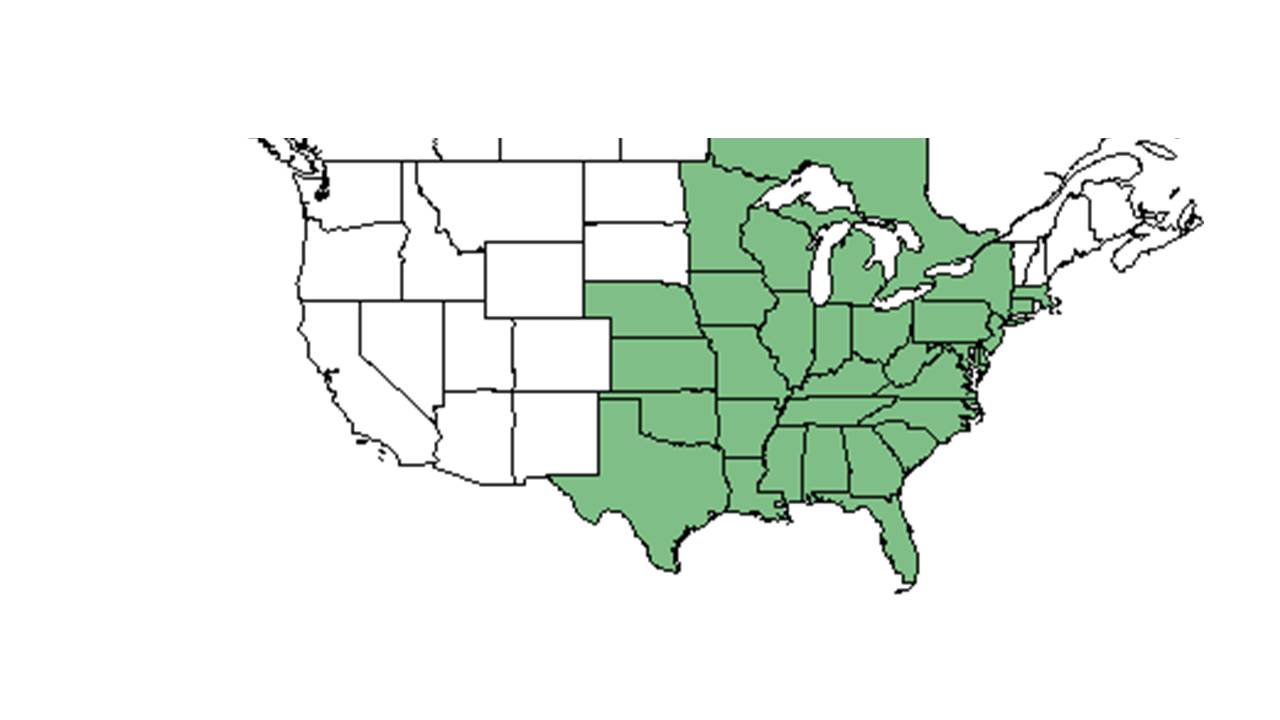Difference between revisions of "Eupatorium altissimum"
(→Ecology) |
|||
| Line 38: | Line 38: | ||
<!--===Seed bank and germination===--> | <!--===Seed bank and germination===--> | ||
<!--===Fire ecology===--> <!--Fire tolerance, fire dependence, adaptive fire responses--> | <!--===Fire ecology===--> <!--Fire tolerance, fire dependence, adaptive fire responses--> | ||
| − | + | ===Pollination and use by animals=== | |
| − | < | + | ''Eupatorium altissimum'' has been observed to host species such as ''Oidaematophorus eupatorii'' (family Mycosphaerellaceae) and ''Hylaeus mesillae'' (family Colletidae).<ref>Discoverlife.org [https://www.discoverlife.org/20/q?search=Bidens+albaDiscoverlife.org|Discoverlife.org]</ref> |
<!--===Diseases and parasites===--> | <!--===Diseases and parasites===--> | ||
| + | |||
==Conservation, cultivation, and restoration== | ==Conservation, cultivation, and restoration== | ||
Revision as of 12:27, 14 June 2021
| Eupatorium altissimum | |
|---|---|
Error creating thumbnail: Unable to save thumbnail to destination
| |
| Photo by Jennifer Anderson, hosted by the USDA-NRCS PLANTS Database | |
| Scientific classification | |
| Kingdom: | Plantae |
| Division: | Magnoliophyta - Flowering plants |
| Class: | Magnoliopsida – Dicotyledons |
| Order: | Asterales |
| Family: | Asteraceae ⁄ Compositae |
| Genus: | Eupatorium |
| Species: | E. altissimum |
| Binomial name | |
| Eupatorium altissimum L. | |

| |
| Natural range of Eupatorium altissimum from USDA NRCS Plants Database. | |
Common name: Tall thoroughwort
Contents
Taxonomic notes
Synonyms: none.[1]
Varieties: none.[1]
Description
A description of Eupatorium altissimum is provided in The Flora of North America.
Distribution
It is seen as far noth as CT; stretches south to Florida, and to Texas. [2] It is mostly seen in the midwest on limestone substrates, but uncommon east of the mountains. [2]
Ecology
Habitat
It is found in woodlands, old fields, woodland edges, and openings over mafic rocks or calcareous rocks. [2] It is also found in roadside ditches. [3]
Phenology
E. altissimum has been observed flowering in July and September.[4][3] Flowers from August to November according to Weakley (2015).
Pollination and use by animals
Eupatorium altissimum has been observed to host species such as Oidaematophorus eupatorii (family Mycosphaerellaceae) and Hylaeus mesillae (family Colletidae).[5]
Conservation, cultivation, and restoration
Cultural use
Photo Gallery
References and notes
- ↑ 1.0 1.1 Weakley, A.S. 2015. Flora of the southern and mid-atlantic states. Working Draft of 21 May 2015. University of North Carolina at Chapel Hill, Chapel Hill, North Carolina.
- ↑ 2.0 2.1 2.2 Weakley, Alan S. Flora of the Southern and Mid-Atlantic States: Working Draft of 21 May 2015. University of North Carolina Herbarium (NCU). PDF. 1120.
- ↑ 3.0 3.1 Florida State University Robert K. Godfrey Herbarium database. URL: http://herbarium.bio.fsu.edu. Last accessed: June 2014. Collectors: R. Kral. States and Counties: Florida: Liberty.
- ↑ Nelson, G. PanFlora: Plant data for the eastern United States with emphasis on the Southeastern Coastal Plains, Florida, and the Florida Panhandle. www.gilnelson.com/PanFlora/ Accessed: 9 DEC 2016
- ↑ Discoverlife.org [1]